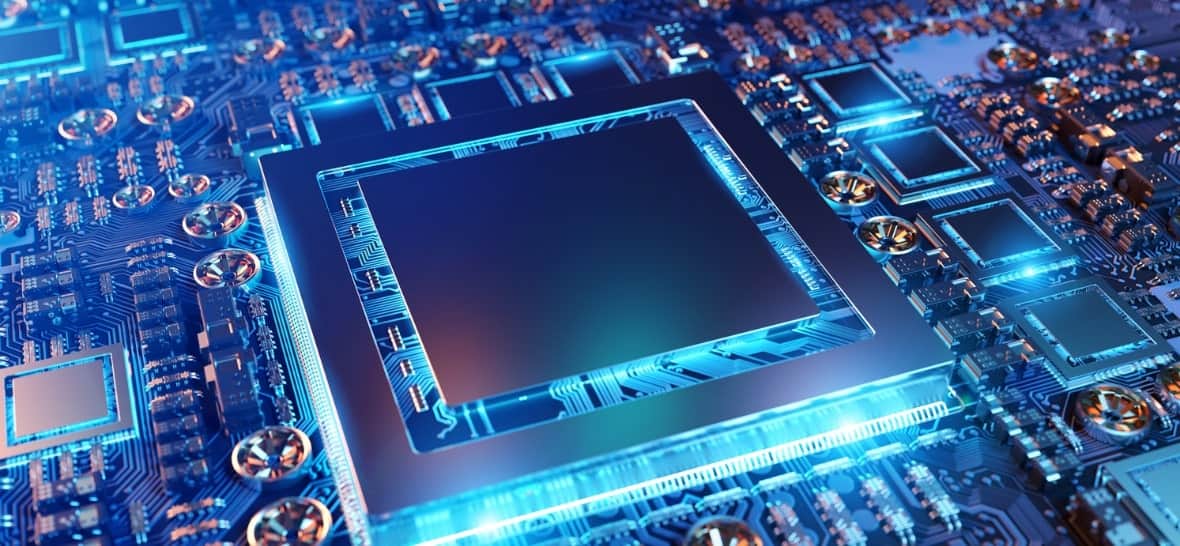Data processing units (DPUs), or smart network interface cards (SmartNICs), are a new programmable chip with hardware acceleration capabilities. These devices offload various data centre tasks, such as networking, security, storage, and management, from general-purpose processors to optimise performance and make data processing more efficient.
The DPU is a separate processor and an accelerator with or without dedicated and programmable processing elements. Moving dedicated functions from the CPU to the DPU frees CPU cores and memory bandwidth for core tasks. This improves network throughput and latency and enhances security. It also enables more granular and dynamic resource management.
DPUs have become critical to accelerating data-intensive workloads in today’s digital era. A DPU delivers high processing power, speed, and storage without expanding the infrastructure. It supports thousands of concurrent users accessing resource-intensive apps with ease. Other benefits include high performance, reliability, lower energy consumption, and lower costs.
The use of coprocessors for internal acceleration is not new. DPUs take the concept to a new level by integrating into the system architecture. DPUs work with the host processors and workload accelerators, and allow DPUs to provide a significant uplift 2x to data centre processing.
The obvious application of DPUs is in the cloud to handle compute-intensive workloads. But the benefits of DPUs extend much beyond the cloud.
DPUs in on-premises data centres
Despite the soaring popularity of the cloud, on-premises data centres still hold a huge amount of data. They also offer greater control, security, and reliability than cloud-based ones. In several instances, deploying the cloud is not an option due to regulatory restrictions.
Installing DPUs in such an on-premises environment optimises data processing tasks locally. Enterprises can offload workloads onto on-premises DPUs instead of relying on cloud resources.
Today, DPUs are available in the SmartNIC (PCIe) form factor. Data centres can derive benefits by plugging these deliveries into a server. DPUs integrate into data centre servers, switches, or storage devices. Or they can remain standalone appliances or gateways.
Adding DPUs improves data centre performance and responsiveness. The DPU offloads data storage, keeping the CPU power-free for mission-critical applications. DPUs enhance the performance of data centres with the same CPU architecture.
DPU allows server CPUs to efficiently run core applications without diluting controls. Moving network functions to a DPU application expedites zero trust. DPUs allow fine-grained micro-segmentation of applications and apply granular controls to enforce zero trust.
Consider an enterprise server that runs an inventory system, invoicing system, a customer resource management platform and also hosts design applications. All these diverse applications need the same basic functionality, such as storing and retrieving data, managing data flow over the network, and ensuring data security. The DPUs take over some of these overhead tasks, reducing the need for additional servers. The DPUs also come with accelerators that speed up some functions.
It becomes possible to break off certain specific functions into specialised accelerators. Thus, the data centre could deploy one DPU for networking, one for storage, one for running data analytics, and another one for security.
DPUs at the edge
The cloud, while offering resilience, comes with limitations of latency and delays. Edge computing solves such bottlenecks and delivers the best of both worlds. The importance of the edge grows as AI and ML applications become increasingly prevalent. DPUs provide acceleration for AI workloads, improving the performance of edge AI applications.
The viability of edge computing, however, depends on the ability to process data locally efficiently. Newer innovations increase the demands for bandwidth, hardware support and speed. DPUs cater to such needs of high-performance edge systems.
Data centres at the edge benefit from the disaggregation or separation of different functions enabled by DPUs. Powerful DPUs, such as NVIDIA’s Bluefield, offer integrated CPU processing cores and high-speed packet processing capabilities. Such advanced DPUs perform multiple functions of a network data path acceleration engine.
These DPUs enable edge applications to feed networked data directly to GPUs without involving system CPUs. DPUs thus take over the role of standalone embedded processors.
Conventional edge architecture predetermined a mix of GPU-equipped and general-compute servers. DPU enables sharing GPU resources and allocating them to where it is most required.

Revolutionising telecommunications with DPUs
DPU improves the performance and reliability of telecommunication networks. The networks become more scalable, flexible and secure as well.
The efficiency of modern-day telecommunication networks depends on the efficient allocation of resources. DPUs boost intelligent traffic management by:
- Enabling enforcement of Quality of Service (QoS) and traffic shaping.
- Optimising packet processing to streamline data handling in routers and switches. Offloading packet processing tasks to DPUs delivers higher throughput and lower latency.
- Implementing network function virtualisation (NFV) makes the architecture more flexible and scalable. DPUs accelerate and enhance the efficiency of virtualised functions.
Programmable DPUs enable the creation of tailored solutions for specific use cases. It enables telecom operators to design and deploy custom apps to adapt to the evolving telecom landscape.
Integrating DPUs into edge computing nodes enables data processing closer to the source. Low latency and high bandwidth make 5G viable. This reduces latency for applications that require real-time processing. Emerging technologies such as augmented reality and autonomous vehicles become viable with DPU-enabled 5G.
DPUs also streamline and accelerate encryption, decryption, and deep packet inspection. Enhanced security processing at the data plane level makes the infrastructure more secure.
Another benefit of DPUs is in network telemetry and analytics. DPUs assist in collecting and analysing network telemetry data in real-time. Advanced analytics enabled by DPU data provide insights into network performance, aiding proactive maintenance and optimisation.
Conclusion
DPUs optimise usage, improve efficiency, and boost performance. DPUs reduce the load on CPUs by 25% to 30% while providing consistent networking for any workload.
DPU hardware and software is still an evolving technology. The top DPU providers, such as AMD, Broadcom, Intel, Marvell and Nvidia, offer products with varying functionality. Regardless, DPUs are integral in the future of computing and will redefine the boundaries of what’s possible in computing.











